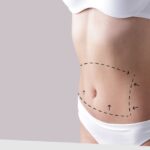Hair loss can be a frustrating experience, whether it’s due to genetics, stress, or medical conditions. Among the growing number of treatments available, PRP hair treatment has become increasingly popular for its non-surgical, natural approach. But like any medical procedure, it’s essential to understand not only its benefits but also its potential side effects.
In this blog, we’ll explain what PRP (Platelet-Rich Plasma) hair treatment is, how it works, and most importantly, the side effects you should know before deciding if it’s right for you.
What is PRP Hair Treatment?
PRP (Platelet-Rich Plasma) therapy involves extracting a small amount of your own blood, processing it to concentrate the platelets, and injecting it back into the scalp. Platelets are rich in growth factors that can help stimulate hair follicles and promote natural hair growth. This procedure is widely used in dermatology and orthopedics, and now also in hair restoration.
The treatment typically requires multiple sessions spaced weeks apart, and results start to appear after a few months. It’s non-invasive, relatively quick, and uses your own biological material, reducing the risk of major allergic reactions.
Common PRP Hair Treatment Side Effects
Although PRP is generally considered safe, it does come with potential side effects—especially when not performed by qualified professionals. Here are the most commonly reported issues:
1. Pain at the Injection Site
Since PRP involves multiple tiny injections into the scalp, it’s natural to feel some discomfort or mild pain during and after the session. Most clinics use numbing cream to minimize pain, but a dull ache may persist for a day or two.
2. Swelling and Redness
Localized swelling and redness are normal reactions as your scalp responds to the PRP solution. These usually subside within 24–48 hours and are part of the body’s healing process.
3. Scalp Tenderness
Some people report scalp tenderness or tightness post-treatment. This can be managed with mild over-the-counter painkillers or simply by avoiding harsh shampoos and styling products for a few days.
4. Infection
Though rare, any injection-based procedure carries a slight risk of infection. If the procedure is not conducted in a sterile environment or aftercare instructions are ignored, bacteria can enter through the injection site. Signs include excessive pain, pus, or fever—consult your doctor immediately if this happens.
5. Bruising or Bleeding
Minor bruising or bleeding can occur due to needle pricks, especially in people with sensitive skin or those taking blood thinners. Applying ice packs can help reduce this side effect quickly.
6. Itching or Irritation
Some patients may feel itchy in the treated area. This could be due to the healing process or a reaction to the topical products used. Avoid scratching, as it can worsen irritation or cause infection.
7. Dizziness or Lightheadedness
Though uncommon, some patients feel lightheaded after the blood draw or injections. This typically resolves quickly with rest and hydration.
8. Allergic Reactions
While PRP uses your own blood, reactions can sometimes occur due to other substances used during the procedure, such as antiseptics or numbing creams. Always inform your provider about any allergies you have.
Rare Complications
In very rare cases, patients may experience:
-
Scalp Numbness (if nerves are irritated)
-
Scarring (especially with repeated treatments)
-
Hair Shedding (shock loss, though temporary)
These are extremely uncommon when the procedure is performed by trained professionals using high-quality equipment and sterile conditions.
Who Should Avoid PRP Hair Treatment?
PRP may not be suitable for everyone. It’s best to avoid or delay the treatment if you:
-
Are pregnant or breastfeeding
-
Have a blood or platelet disorder
-
Take blood thinners or corticosteroids
-
Have a chronic illness (like liver disease or cancer)
-
Have an active scalp infection or skin condition
A thorough consultation with a dermatologist or hair specialist is essential before starting treatment.
Recovery and Aftercare
Post-treatment care is crucial to minimize side effects. Here are some simple tips:
-
Avoid washing your hair for at least 12–24 hours.
-
Don’t use harsh hair products for 2–3 days.
-
Refrain from intense physical activity or sun exposure for 24–48 hours.
-
Avoid alcohol or smoking right after the procedure, as they can affect healing.
If side effects persist or worsen, consult your doctor immediately.
Choosing the Right Clinic
If you’re considering PRP hair Treatment in Bangalore, it’s vital to choose a reputed and experienced clinic. Look for certified dermatologists or hair specialists, check client reviews, and ask about the hygiene standards and technology used.
For those exploring non-surgical alternatives, many clinics offering best hair replacement in Bangalore also provide PRP therapy as part of their comprehensive hair restoration services. Some even combine PRP with other treatments like microneedling or hair transplants for better results.
Conclusion
PRP hair treatment can be a highly effective solution for hair thinning and early-stage hair loss, especially when done correctly. While side effects are generally mild and temporary, being informed helps you make safer, smarter decisions.
Always consult with a certified expert and follow the recommended aftercare to reduce the risk of complications. And if you’re in Bangalore, ensure that you select a clinic known for excellence in PRP hair Treatment in Bangalore or the best hair replacement in Bangalore for optimal results.





